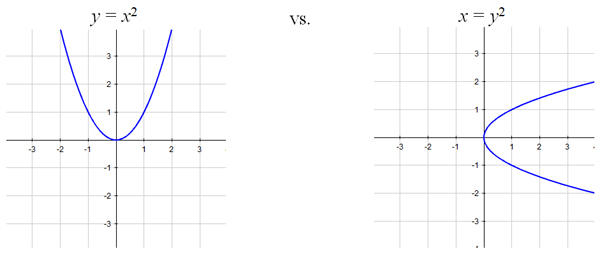There are four types of conic sections: circle, parabola, ellipse, and hyperbola.
![]() Watch the movie below for a quick review of how each conic section is formed when a plane intersects a double-napped cone.
Watch the movie below for a quick review of how each conic section is formed when a plane intersects a double-napped cone.
This resource focuses specifically on parabolas. You will study the other types of conic sections in subsequent resources.
You have been studying the graphs of parabolas since your Algebra I class. You probably recall that the most basic parabola is formed by the quadratic function equation y = x2.
Do you remember what the graph of y = x2 looks like? Do you recall what special features it has? You should be able to locate the vertex and the axis of symmetry on the basic graph below.

![]() Use the applet below to graph y = x2 and identify the coordinates of the vertex and the parabola's axis of symmetry.
Use the applet below to graph y = x2 and identify the coordinates of the vertex and the parabola's axis of symmetry.
You will type y = x^2 (or copy and paste it) into the white box on the bottom right of the applet.
Now let's try graphing x = y2 using the grapher. What do you think is going to happen?
What's different about the two graphs? One of the two graphs is a function. The other is not. Which one is a function?

It's important that you learn the shapes and orientations of the two most basic parabolas. All of the parameter changes that we are going to discuss next are based on knowing these two graphs, so try to commit them to memory. You should remember:

Both have their vertex at the origin
y = x2 opens UP
x = y2 opens to the RIGHT
It's important to note that not all parabolas have to be oriented horizontally or vertically.
![]() Parabolas can be rotated in any direction, as demonstrated in the video below:
Parabolas can be rotated in any direction, as demonstrated in the video below:
You may study those types of parabolas and other rotated conic sections in your next math course. For this course, we are going to focus only on parabolas with either a vertical or horizontal axis of symmetry.